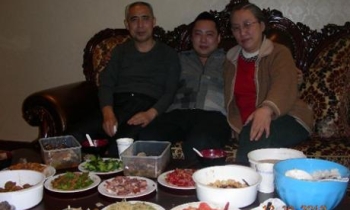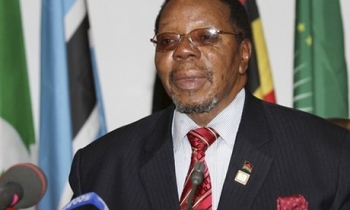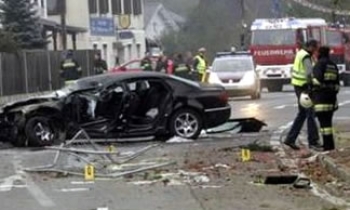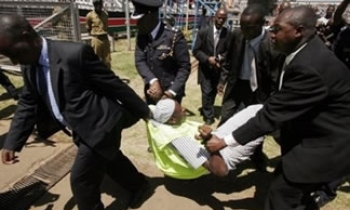Unidentified gunmen, ambush attacks, serial abductions and human right violations go hand in hand in a conflict ridden society. This is true of Sri Lanka, India, Nepal, Pakistan or any other country in the world which is going through a same scenario.
The strategies of dealing with such conflicts have ranged from political suppression at one end of the spectrum to political accommodation at the other. A government's stance towards conflicts based on ethnicity or identity politics generally rotate between seeing them as a challenge to its unity and integrity, and taking pride in the plurality and rich ethnic and cultural tapestry of the country. While, a government opt to either acts of suppression or the strategy of political accommodation in resolving conflicts, does the media, as the 'fourth state' of a country has a role to play? To find an answer to this Sri Lankan media need not look to United States of America or the United Kingdom as we have classic examples set by our colleagues in the neighbouring countries.
A classic and recent example to find whether the media has a role to play in a conflict ridden society was set by the media personnel of our neighbouring country Nepal, who mobilized people to re-establish a democratic government ousting a monarchy of five years, despite going through immense suppressions and imprisonments.While, the Nepalese media fought for democracy taking part in the struggle actively, Indian media has a history of dealing with conflict over the years as the country went through numerous conflicts-be it religious, ethnic or social.
Bharath Bhushan, the Editor of The Telegraph (Delhi) who was here on a 'South Asian Editors' Media Mission' to share his experiences with the Sri Lankan colleagues, said reporting conflicts in dense could sometimes even lead to a path of resolving the crisis.
In dealing with the Indian experience of media covering conflictshe sought to first go through how the Indian state's strategies for dealing with conflicts have evolved over time and then discuss what the Indian media does well and what it does wrong in reporting on these conflicts.
He said as in any other country the Indian state's stance towards conflicts based on ethnicity or identity politics has alternated between seeing them as a challenge to its unity and integrity, and taking pride in the plurality and rich ethnic and cultural tapestry of the country.
"The strategies of dealing with such conflicts have ranged from political suppression at one end of the spectrum to political accommodation at the other. A policy of suppression carries within it the idea of a strong and unitary State, which emphasizes that it is the only legitimate source of violence and it easily resorts to police or military action when threatened."
"The strategy of political accommodation, on the other hand, premises itself on the notion of a State that is inclusive and willing to move towards innovative and dynamic political structures. Political accommodation, in this notion of the State, is seen not as pandering but as a manifestation of the innate inclusiveness of democracy," he stated.
Mr. Bhushan also said suppression may be the strategy of first choice in situations where in the assessment of the State the "battle" can be won easily.
"It did succeed, although at considerable human and political cost, in Punjab. Yet when suppression failed with the Mizos, the State moved to accommodate the Mizo National Front. Today, the MNF runs a democratic government in that state of Mizoram. In dealing with the Kashmir conflict too, New Delhi's approach has varied over time from appealing to the international community, co-option through special Constitutional provisions to a long period of suppression. When the latter failed miserably, negotiations have been resumed once again. India's hand was also forced in the case of Kashmir by Pakistan's military and militant intervention."
According to him, in the process of dealing with ethnic conflicts the Indian state has learned a great deal about political craft."The expectations from the peace process of the State and insurgent groups often differ at the outset. However, these expectations get moderated thorough the process of cease-fire or suspension of operations against each other which creates favourable conditions for political dialogue."
"The more the two sides talk, even if it is only about ground rules of the cease-fire, the more they learn to trust each other and underground leaders can begin to realistically assess what may be achieved through dialogue. Even if they begin with demanding complete sovereignty or a separate state once they choose the political path of dialogue, they continue talking even when sovereignty is ruled out or the difficulties associated with the formation of a separate state are pointed out."
Shifting from the State's behaviour to how Indian media report on conflicts, the cease-fire and the peace talks Mr. Bhushan said: "Our media -- whether print, radio or television -- does not question the state and the army sources sufficiently enough - neither in terms of verifying the information given nor in terms of the labels used. Often it is difficult to get a different viewpoint as people are far too frightened to counter the view of either the security forces or the insurgents where there is a conflict situation. There are no independent civil society voices."
He said since the underground is often not in a position to give an alternative version, there is also no verification possible of what the State agencies claim. "Thus, Editors would much rather carry a story, even if heavily biased with only the government's version getting prominence, rather than be accused the next day of missing it."
"Of course we are not even discussing the widespread and unquestioning acceptance of the internal security paradigm of the State by reporters, their editors and the media establishment. The nationalist ideology is so overpowering that most journalists simply follow the terminology of the state in describing some insurgent groups as "terrorists" rather than militants or even insurgents, which have a political connotation. This is particularly true of Kashmir militancy, for example. After 9/11 there is an overwhelming belief that no cause can justify the use of violence. All violence except that sanctioned by the State is easily designated as "terrorist" violence," Bhushan said while noting that this situation not only in India but in any other country.
He felt that Indian media failed 'miserably' when writing about the foreign policy dimension of internal conflicts. Whether it is the role of Pakistan in Kashmir, in India's north-east, or elsewhere in India, or making charges against Bangladesh as the new nursery of Islamic terror directed at India, there is no attempt to assess or use the information with a reasonable degree of scepticism, he said. "Suddenly the best of our columnists and reporters become stenographers for the Spokespersons of the Home Ministry or the External Affairs Ministry. A partisan media becomes a force-multiplier of the internal security machinery of the State."
Bhushan noted two areas where the Indian media seems to be coming of age while reporting conflicts which are also could be adopted by the Sri Lankan media in reporting conflicts. He saw this in taking note of human rights issues increasingly and reporting on them aggressively. While on the other attempting to build a relationship with civil society organizations on the ground in conflict zones.
"In Jammu and Kashmir, it was the media which helped put human rights abuses on the agenda with the help of NGOs and other civil society organizations. The case against India by Pakistan in the Human Rights Commission in Geneva is almost invariably based largely on Indian media reports. The Indian Army itself has been forced to provide basic human rights education to its troops deployed in Kashmir. In the late 1990s , they army issued them "Ten Commandments" about protecting human rights contained on a laminated card which they are expected to carry with them at all times while on duty in Kashmir."
The most recent and visible example of media's constructive role in a conflict situation according to him was of the abuse of the Armed Forces Special Powers Act in the north-east. The simmering anger of the people over this law which provides for immunity to killings to the level of a junior commissioned officer of the army, took off after the rape and shooting of a young woman in Manipur. It led to unusual protests - with half a dozen elderly women protesting naked outside the local Army Headquarters - which when reported widely led to civil society groups and Human Rights organizations from the rest of India sending teams to inquire into the abuse of this particular law.
He emphasized the need for protecting human rights through media coverage to help in many ways as it contextualizes violence. "It prevents the positing of good vs. evil in a conflict. By writing about victims of the conflict - more often than not innocent civilians, the media helps show that there are not only two parties to the violence; that apart from the State vs. the insurgents, society at large has a stake in it. The humanitarian angle helps create public opinion."
Media's coverage of human rights violations in conflict zones and its linkages with civil society organizations tend to reinforce each other. On issues of human rights violations, the media often relies on inputs from local NGOs or other civil society groups active in the region. They become alternative sources of information in the conflict zone. Their tip-offs, their initial reports and their anger at violence become mediating factors between the State's version and the perception of the journalists of the conflict situation.
The partnership between the media and civil society becomes even more crucial after a cease-fire in the conflict resolution phase. The example of insurgent movements in India shows that a big role in sustaining the peace dialogue is played by civil society. Politically savvy insurgent groups start a process of consultation with the civil society organization in order to win their support for their cause; and, the civil society organization begin a process of consultation with the government of the day as well as larger civil society organizations in the rest of India. The people-to-people dialogue between those in the conflict zone and those outside creates a large constituency for peace and against recurrence of violence.
The media coverage of these dialogues as well as the processes themselves results in providing a solid underpinning for the peace process. Society at large, not only in the conflict zone but even outside it, starts supporting the peace process. This lends the peace process a forward momentum as well as sustainability.









